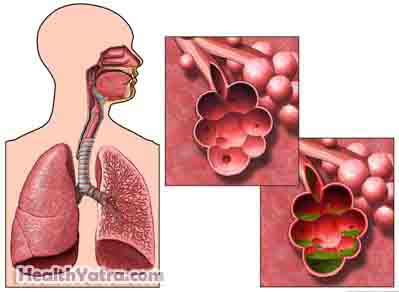Definition
Cadmium toxicity occurs when a person breathes in high levels of cadmium from the air, or eats food or drinks water containing high levels of cadmium. Cadmium is a naturally occurring metal. It is usually present in the environment as a mineral combined with other elements like oxygen, chlorine, or sulfur. Either short-term or long-term exposure to cadmium can cause serious health problems. If you suspect you have been exposed to cadmium, contact your doctor right away.
Causes
Most cadmium used in the United States is a byproduct of the productions of metals such as zinc, lead, and copper. It is also found in the following products:
- Batteries
- Pigments
- Metal coatings
- Plastics
- Some metal alloys
- Fertilizers
- Cigarettes
When cadmium enters the air, it binds to small particles. It falls to the ground or water as rain or snow, and may contaminate fish, plants, and animals. Improper waste disposal and spills at hazardous waste sites may cause cadmium to leak into nearby water and soil.
Having skin contact with cadmium is not known to cause health problems, but the following exposures to cadmium can cause serious health problems:
- Breathing air that contains high levels of cadmium
- Eating food containing high levels of cadmium, such as shellfish, liver, kidney, potatoes, and leafy vegetables
- Drinking water contaminated with cadmium
- Breathing in cigarette smoke, which doubles the average daily intake of cadmium
Risk Factors
Anyone can develop cadmium toxicity as a result of cadmium exposure. Factors that increase your chances of being exposed to cadmium include:
- Smoking
- Living near hazardous waste sites or industrial factories that release cadmium into the air
- Working in a metal smelting and/or refining plant
- Working in a plant that produces cadmium products, such as batteries, coatings, plastics, and pigments
- Having a nutritional deficiency in calcium, iron, protein, and/or zinc
Symptoms
Eating food or drinking water contaminated with high levels of cadmium can result in:
- Vomiting/nausea
- Stomach cramps
- Diarrhea
- Kidney damage
- Fragile bones
- Death
Breathing in cadmium can result in:
- Flu-like symptoms, such as body aches, chills, weakness
- Vomiting
- Diarrhea
- Abdominal pain
- Shortness of breath
- Swelling of the nose, pharynx, and larynx—with chronic inhalation

There is no conclusive evidence that cadmium can cause lung cancer but, as a precaution, the Environmental Protection Agency (EPA) has classified cadmium as a probable human carcinogen in humans.
Diagnosis
Your doctor will ask about your symptoms and medical history, and perform a physical exam.
Tests may include the following:
- Blood tests
- Urine tests
- Hair or nail analysis
- Neutron activation analysis
Treatment
There is no effective treatment for cadmium toxicity. Avoid exposure. Your treatment will be designed to help manage and relieve your symptoms.
Prevention
To help reduce your chances of getting cadmium toxicity, take the following steps:
- Do not smoke. Smoking is the highest source of cadmium intake for most people.
- Identify potential sources of cadmium in and around your home, at work, and where your children play.
- If you maintain a vegetable garden, consider having fertilizers tested for cadmium. Some fertilizers have been found to be high in cadmium, which may then concentrate in your vegetables. Avoid any use of cadmium containing fungicides near your vegetable gardens.
- Eat a balanced diet that provides enough calcium, iron, protein, and zinc.
- Take inventory of and properly store cadmium-containing products in your home. Keep them out of the reach of children. When in doubt, check the label for cadmium or call the manufacturer to find out if the product contains cadmium.
- Keep nickel-cadmium batteries out of the reach of small children. Find out how to properly dispose of these batteries from your local waste disposal office.
- If you have a water well, have your water tested for cadmium.
- If cadmium is present in your well water, consider using bottled water for drinking or install a water filter that removes cadmium and other metals from drinking water.
- If you work around cadmium, talk to your occupational health and safety officer to find out if you could be bringing cadmium home on your clothing, skin, hair, tools, or other objects.
- Do not allow young children to play in or around hazardous waste sites.
